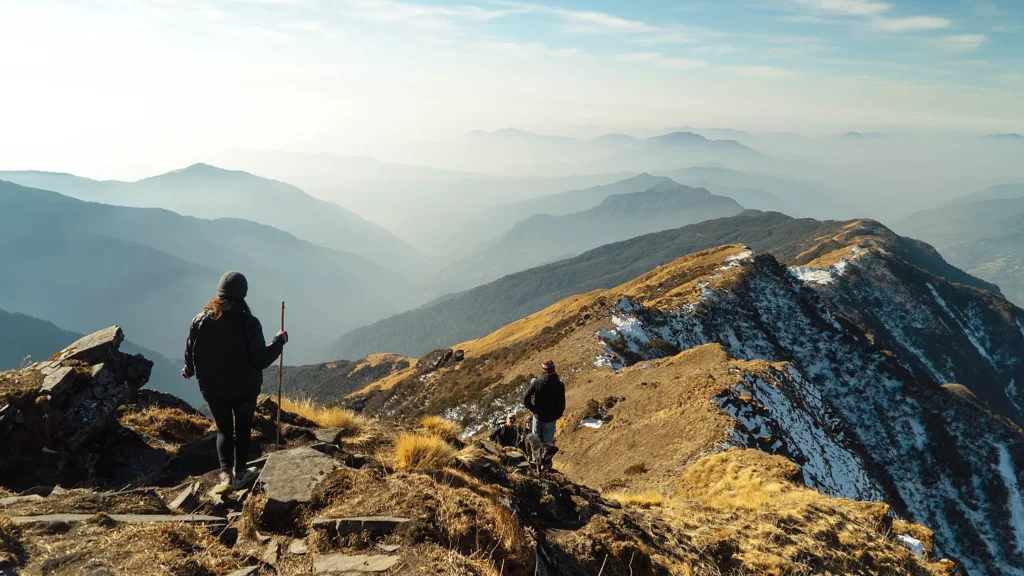
In the digital age, navigation tools like Google Maps have become indispensable for hikers venturing into the wilderness. However, an alarming incident near Mount Fromme in British Columbia has highlighted the severe risks associated with relying on inaccurate trail information. This situation underscores the importance of using reliable sources for outdoor navigation and the potentially life-threatening consequences of misplaced data.
The Risk of Non-Existent Trails
A troubling case recently emerged when a phony hiking trail on Google Maps led multiple hikers into a perilous situation. The fictitious trail, which allegedly connected Mount Fromme to nearby Kennedy Falls, was removed from Google Maps on November 6, 2023, after a series of dangerous rescues by North Shore Rescue. The trail had never existed in reality, but its presence on the digital map created a false sense of security, prompting hikers to venture into an extremely hazardous area.
This false trail was not just a minor inconvenience; it had already led to one fatality and numerous other rescues. The steep, cliff-laden terrain of the north side of Mount Fromme is known for its dangerous nature. There are no official trails in the area, and the risks involved in navigating the area without proper guidance are significant.
The Role of Google Maps in Outdoor Navigation
Google Maps, widely regarded for its convenience in urban and road navigation, is not equipped to handle the complex and often treacherous environments of the backcountry. While the platform can be helpful in many scenarios, it falls short in wilderness areas, where a lack of detailed, up-to-date information can mislead hikers into risky situations.
Google uses a variety of data sources, including third-party information, imagery, and community feedback, to update its maps. However, in the case of Mount Fromme, this reliance on potentially unverified or incorrect sources resulted in a hazardous and non-existent trail being displayed on the map.
The Mount Fromme Rescues: A Wake-Up Call for Hikers
November 2023 Rescue
The most recent rescue occurred on November 4, 2023, when a hiker became stranded while attempting to navigate from Kennedy Falls toward Mount Fromme. As darkness fell and low cloud cover descended, the rescue team had to act quickly to locate the lost hiker before conditions made airlifting impossible. The rescue operation involved lowering two technicians via rope belay systems to safely retrieve the hiker from the steep cliffs.
September 2023 Rescue
Just one month earlier, North Shore Rescue was called to a similar incident involving another hiker stranded on the north side of Mount Fromme. After sunset, the hiker, who was stuck on a cliff, used a phone flashlight to signal for help. Rescuers, equipped with night-vision goggles, managed to locate and rescue the individual before it was too late. These frequent rescues serve as a stark reminder of the dangerous consequences of inaccurate trail information.
Why Traditional Navigation Tools Are Still Essential
While digital maps offer great convenience, experts strongly recommend using more specialized tools for wilderness navigation. Programs like CalTopo and Gaia GPS are tailored for outdoor use, providing hikers with topographical maps and accurate trail data. Unlike Google Maps, these tools are specifically designed to cater to hikers, climbers, and backcountry adventurers.
For those who prefer traditional methods, paper maps and compasses remain invaluable. These time-tested tools, combined with modern GPS devices, offer a reliable backup in case of digital failures or inaccurate online information.
Key Takeaways: Staying Safe in the Wilderness
To mitigate the risks posed by inaccurate mapping tools, hikers must adopt a more cautious and informed approach when navigating the outdoors. Here are a few critical guidelines to ensure safety on the trail:
- Avoid relying on urban street maps for wilderness navigation. Use specialized hiking apps like CalTopo, Gaia GPS, or Komoot.
- Carry a paper map and compass as backups in case your digital devices fail.
- Pack essential safety gear, including a flashlight, external battery pack, and appropriate footwear.
- Always plan ahead and check trail conditions with local hiking groups or official websites.
- Report inaccuracies if you encounter them on mapping platforms, helping others avoid dangerous routes.
The Impact of the Digital Era on Wilderness Navigation
While technology has revolutionized outdoor exploration, it also comes with significant risks when misused. As illustrated by the Mount Fromme incidents, a lack of proper trail information can lead to severe consequences. Technology should be seen as a supplement to, not a replacement for, traditional navigation skills. It is essential for hikers to remain vigilant and use the best available tools to ensure they are prepared for the challenges of the wilderness.
Conclusion: The Need for Reliable Mapping Systems
The recent rescues near Mount Fromme illustrate the importance of accurate, reliable mapping for outdoor activities. False or misleading trail data on platforms like Google Maps can misguide hikers into dangerous situations, as shown by the tragic events that have unfolded. By taking a more responsible approach to navigation and relying on specialized tools, hikers can ensure their safety and enjoy the outdoors with confidence.
As the digital landscape evolves, it is crucial for tech companies like Google to ensure the accuracy of outdoor data, and for hikers to prioritize traditional and specialized navigation systems to avoid such risks in the future.
